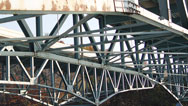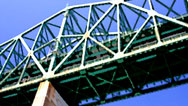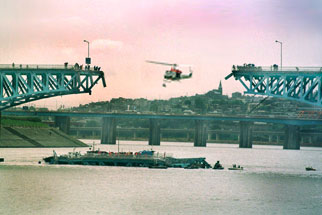Why the Bridges Failed
- By Rachel VanCott
- Posted 07.01.08
- NOVA scienceNOW
The 2007 collapse of Minnesota's I-35W bridge killed 13 people. Tragic as it was, the collapse is helping engineers foresee and act on structural problems and prevent possible failures of other spans. In this slide show, see how lessons learned from past collapses have helped improve bridge safety, and how "smart" sensing technology is already aiding the monitoring of bridges both new and old.
Credits
Images
- (I-35W Mississippi River Bridge images)
- Courtesy Minnesota Department of Transportation;
- (Honeymoon Bridge)
- Courtesy Niagara Falls, Ontario Public Library;
- (Tacoma Narrows Bridge)
- Courtesy Tacoma Public Library, Richards
Studio Collection;
- (Silver Bridge)
- Courtesy West Virginia State Archives, Maurice Hamill Collection;
- (West Side Highway)
- Courtesy Library of Congress, Historic American Engineering Record;
- (Mianus River Bridge)
- © AP Images;
- (San Francisco-Oakland Bay Bridge)
- Courtesy California Department of Transportation;
- (Songsu Bridge)
- © AP Images;
- (Bixby Creek Bridge)
- © Jerry Moorman/istockphoto.com
Related Links
-

Can we engineer bridges that tell us what's wrong with them before it's too late?
-

The University of Michigan's Jerome Lynch answers questions about the future for "smart" bridges, and more.
-

In this audio interview, structural engineer Michael Todd describes the state of bridge monitoring around the world.
Close
You need the Flash Player plug-in to view this content.







